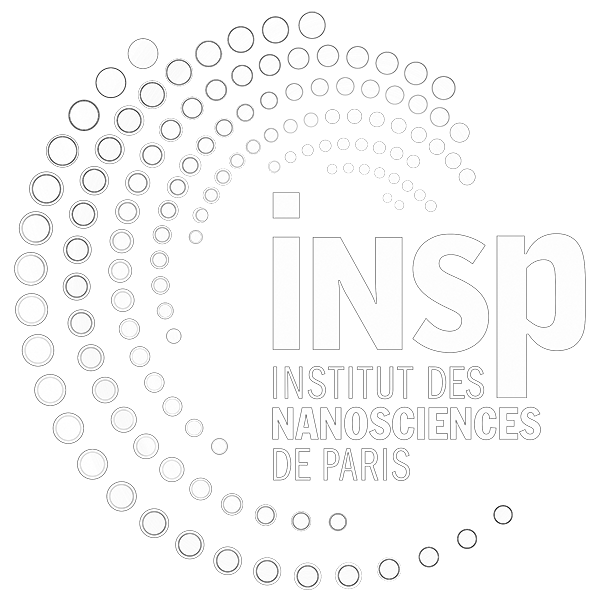Surface acoustic waves for novel magnetism-based devices
Financement : doctoral school ED397 competition, application dead-line April 15th
Description :
Début : 2025
Fin :
Doctorant.e :
Equipe(s) : Nanostructures : élaboration, effets quantiques et magnétisme
Page des thèses de(s) l'équipe(s) : Nanostructures : élaboration, effets quantiques et magnétisme
Etat de la thèse : Thèse et Thèse proposée
Magnetism intervenes in the data storage components, with information coded by the magnetization direction of submicronic magnetic domains. The calculations are instead done using semiconducting materials, with transistors performing logical operations (“NOT”, “AND” etc.). A new paradigm proposes to use magnetic materials to perform these operations, by encoding the information on the amplitude and phase of so-called “spin-waves”, magnetic excitations, with GHz frequencies, and micron wavelengths. They can be excited by RF antennas, or more recently by surface acoustic waves, thanks to magneto-elasticity (an effect coupling magnetization and strain [1]). Foreseen advantages are a higher integrability, a higher tunability and even a lower consumption of devices for our increasingly energy-greedy digital world.
The objective of this thesis will be to explore the potential of this magnetoacoustic coupling on a variety of systems up to now rarely studied under this type of stimulus:
(i) rare-earth/transition metal alloys: these alloys can have a distinct temperature cancelling the total magnetic and orbital momenta. This will allow a unique study of ferromagnetic and antiferromagnetic resonance driven by acoustic waves
(ii) ultra-thin ferromagnetic layers: these systems can host skyrmions, tight and topologically protected magnetic textures that are so far been driven by slow magnetic fields/heat-dissipating currents. We’ll explore how they could instead be nucleated, propagated and manipulated efficiently by acoustic waves, via magnetoelastic coupling.
(iii) patterned ultra-thin ferromagnetic layers grown on particularly piezoelectric substrates: excited at high powers, we are expecting a non-linear magnetic behaviour to appear which we will couple back to the acoustic regime, paving the way toward s a new type to non-linear RF devices.
 Most groups detect these spin waves electrically, after propagation along a wave-guide, or a delay line. While these measurements are ideal for a commercial device, they provide little information about the physics at play between the excitation and detection of the waves. The thesis will aim to couple electrical measurements of the acoustic behaviour with optical measurements [2] of the magnetic behaviour, in order to have a full picture of the interactions taking place.
Most groups detect these spin waves electrically, after propagation along a wave-guide, or a delay line. While these measurements are ideal for a commercial device, they provide little information about the physics at play between the excitation and detection of the waves. The thesis will aim to couple electrical measurements of the acoustic behaviour with optical measurements [2] of the magnetic behaviour, in order to have a full picture of the interactions taking place.
The PhD candidate will interact with several French and foreign groups with which the group is currently collaborating, promising enriching interactions on other research projects related to magnonics, spintronics and magneto-acoustics.
We are looking for a candidate with a strong motivation for experimental work, although simple modelling and numerical simulations are also routinely used to interpret our data. Typical techniques that will be used are: time-resolved Kerr effect using a pulsed laser,
Application details on the web site of the Doctoral School ED 397
[1] “Symmetry of the coupling between surface acoustic waves and spin waves in synthetic antiferromagnets” , R. Lopes Seeger, L. La Spina, V. Laude, F. Millo, A. Bartasyte, S. Margueron, A. Solignac, G. de Loubens, L. Thevenard, C. Gourdon, C. Chappert, and T. Devolder , Phys. Rev. B 109, 104416 (2024) [2] “Time- and space-resolved nonlinear magnetoacoustic dynamics”, M. Kraimia, P. Kuszewski, J.-Y. Duquesne, A. Lemaître, F. Margaillan, C. Gourdon, and L. Thevenard, Phys. Rev. B 101, 144425 (2020)

